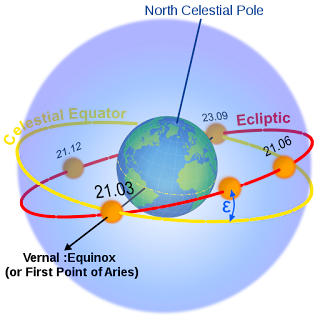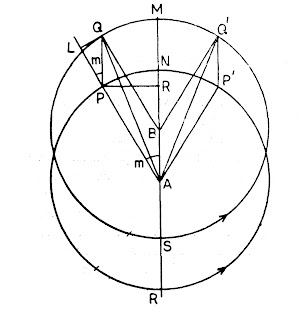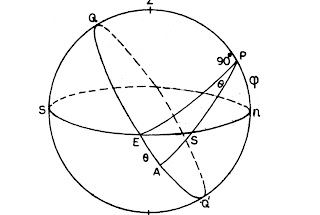All planets traverse in ellipses and epicycles and this came to be known as the Epicycles Theory.
In the above diagram, the circle A is the mean orbit of the planet. P is the mean Position of the planet and the small circle P is the epicycle.
The small epicycles traversed by a planet are calculated and the mandaphala, the equation of center is computed and added if the Manda Kendra is in between 180 and 360 and subtracted if the M K is < 180. Manda Kendra is the angle between Position and Aphelion.
From the perspective of the Epicyclic theory & the Hindu astronomers, the radius of the epicycle was given instead of PQ and the circumferences of the epicycles. Both circumferences and radii are given in degrees, minutes and seconds, so that the equation of the center may be computed in deg min and secs. The epicycle in the case of the Equation of Center is given as Manda Nicha Uccha Vritta.
Manda – Manda Phala or Equation of Center
Uccha – Apogee
Nicha – Perigee
Manda Kriya is a Jya Ganitha Kriya, a trignometric reduction of the mean longitudes and distances of the planets to their heliocentric longitudes and distances.





